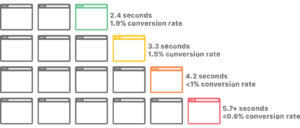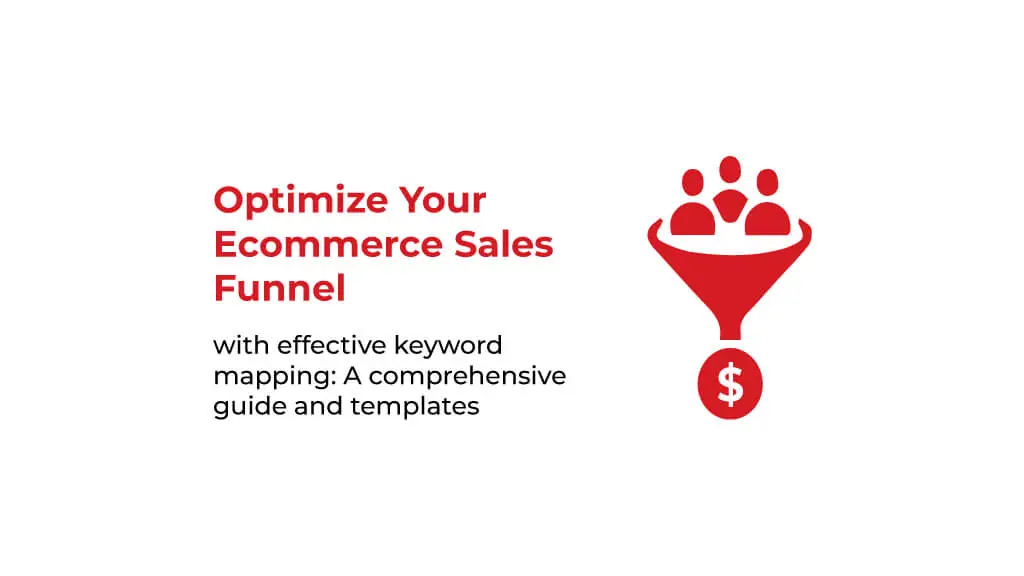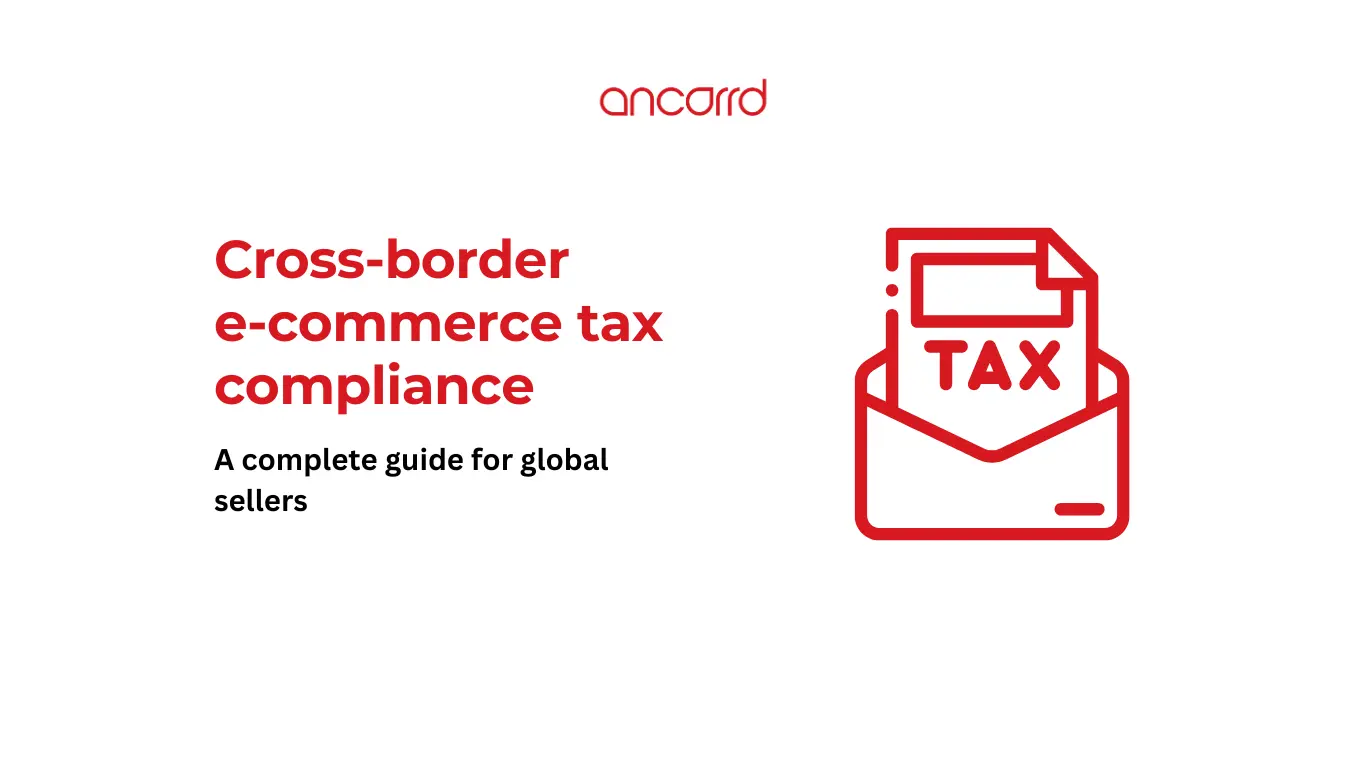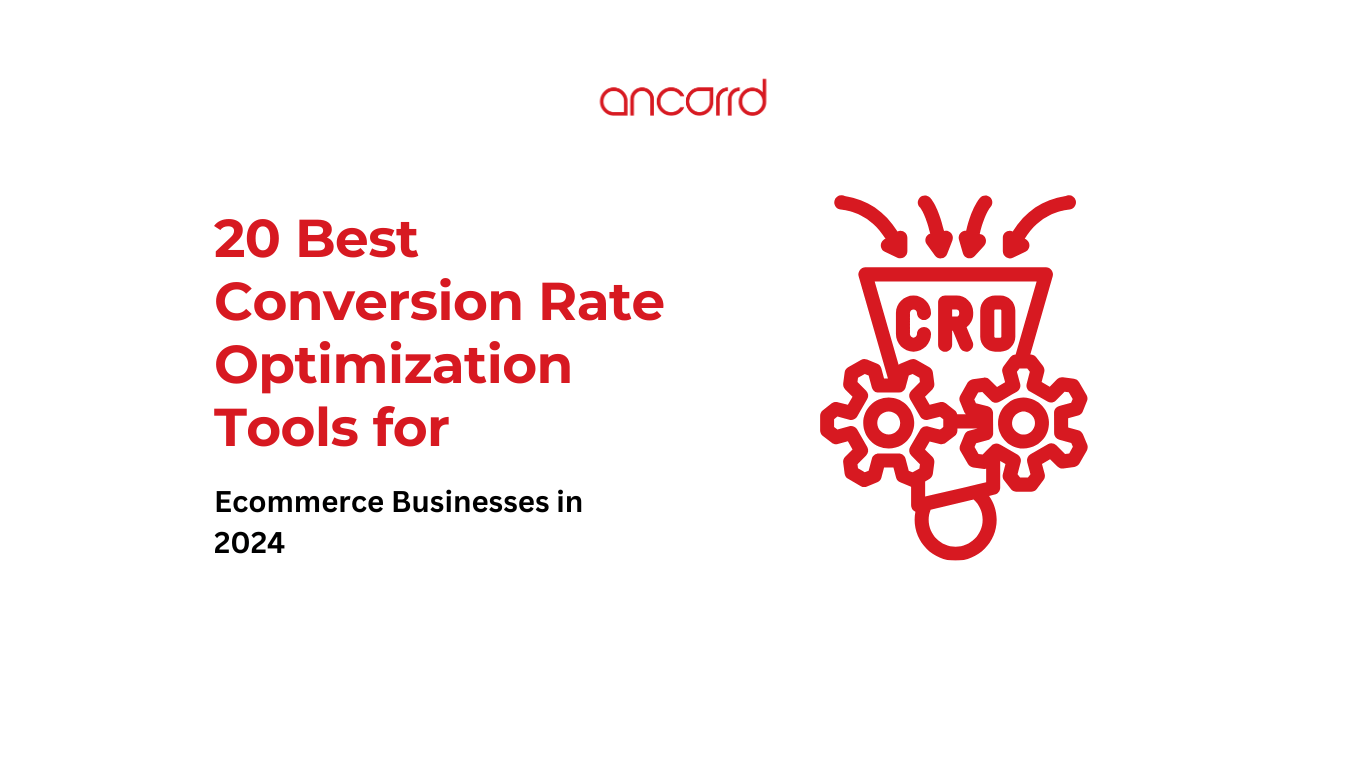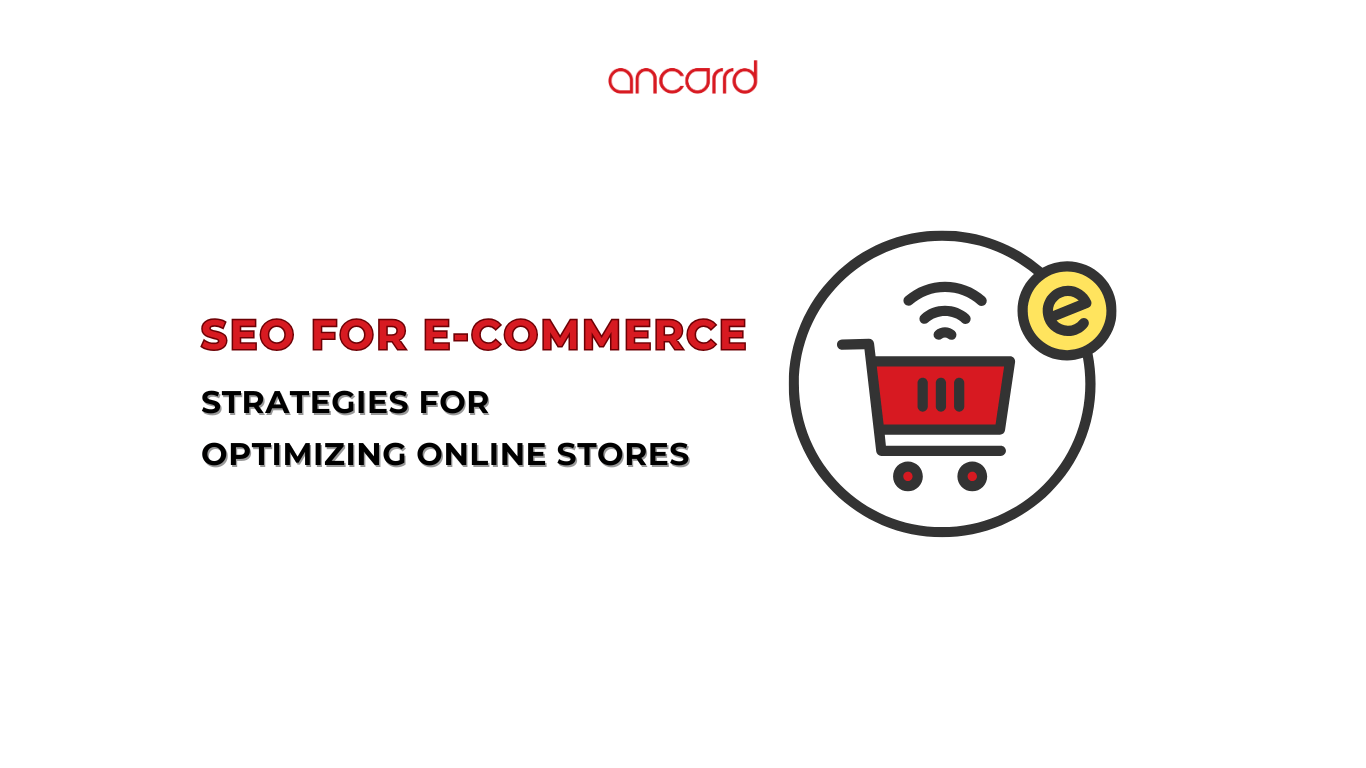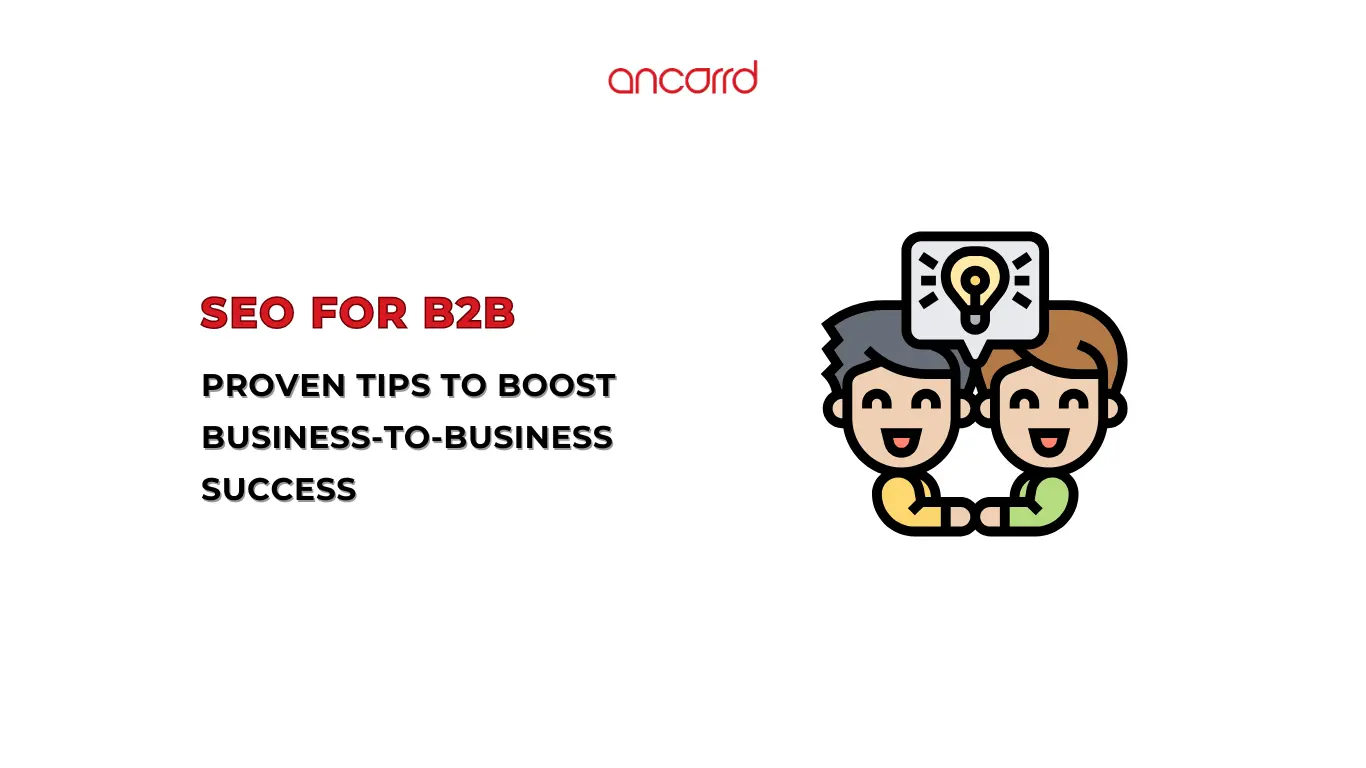What is the one thing a sales representative craves? Qualified leads.
And? Long-term relationship building. And? Generating leads from existing traffic without investing extra money in driving new traffic every quarter. The technique that helps companies generate qualified leads from existing traffic is known as CRO or “Conversion Rate Optimization.”
In this blog, we are going to discuss some winning conversion rate optimization tips that will double your sales and help you develop a process for sustainable growth this quarter without breaking the bank.
What is CRO (Conversion rate optimization)?
Did you know that 69% marketers bCRO, or Conversion Rate Optimization, is a percentage of the number of people that visit your website to people that actually complete any desired outcome (e.g. making a purchase). This practice aimed at increasing this % by optimizing your website conversion.
Most of the marketers believe that their top priority is “Conversions”. But at the same time 78% of brands are not happy with their conversion rates. Where is the lack? Why are companies struggling with conversions when the top KPI for them is to convert visitors into pay9ng clients. That’s where you need a dedicated marketing manager or an outbound team to take care of your conversions.
These stats might be alarming, but at the same time, they shed light on how much potential there is. Only if we can optimize conversions can we get revenue from our one-time traffic.
What is meant by a good conversion rate
Now a question arises: what is the good conversion rate for a website? It’s usually between 2% and 5%, with 3.9% being the average.
But is that a universal number? No.
Different industries have different values of conversions. Conversion rates highly depend upon your niche as well.
According to Ranktracker, organic leads on an e-commerce website have a conversion rate of approximately 14.6%.
The food & drink industry has the highest conversion rate at about 4.95%, whereas sporting goods have the lowest recorded conversion rates (around 2.35%) by industry.
But irrespective of your industry, there are strategies that help you retain your existing traffic and make them perform your desired outcome. Now let’s delve into the top conversion rate optimization tips to address the gap in your conversion strategy.
Conversion rate optimization Tips
Ranktracker stated that mere 8% of visitors actually convert during their first (website) session. But if your website is optimized for conversion there are 40% more chances of your visitors to revisit and actually make a purchase.
There are alot of strategies that fall under conversion rate optimization. Here we will discuss top 10 conversion rate optimization strategies that cater to the gap that has been created in your conversion strategy and boost your leads generation game.
Tip #1: Optimize Website Speed and Performance
Website speed dramatically impacts your conversion rate. Studies reveal that websites that load quickly have higher and better conversion rates. According to skilled.co, 47% of website visitors expect the website to load in under 2 seconds.
These studies are also backed by some big names that have statistically proven that optimizing their website speed positively impacts their conversion rate.
Walmart revealed that their conversion rate boosted by 2% with every 1-second improvement in their load time. Similarly, COOK reveals that they have achieved a 7% increase in their conversion rate by reducing their loading time to 0.85 seconds. This is the amount of potential a mere adjustment can hold. Small improvements in conversion rates can significantly boost a site’s revenue.
For example, if a website makes $10 million annually and its conversion rate rises by 2% after its loading speed improves, it could earn an extra $200,000.
There are few tips that help improve site speed as well;
- Image optimization
- Caching
- Minimizing HTTP requests
Tip #2: Conduct Comprehensive Audience Research
A Zendesk report shows that 68% of customers like personalized experiences on websites. Often, while using social media, we see ads for things we like, like clothes or shoes we’ve been looking for. This personalization is hard to achieve and requires a lot of work behind the scenes. To better understand your audience, their needs, and how to reach them, you can target them more effectively, leading to better leads and increased revenue.
There are a lot of methods for conducting effective audience research, such as:
Surveys:
Online surveys using platforms like,
- SurveyMonkey,
- Google Forms
- Typeform.
Analytics tools:
- Google Analytics
- Adobe Analytics
- HubSpot to analyze website traffic and user behavior.
User interviews:
Conducting in-person conversations with a sample of your target audience to gather relevant information and feedback.
Using these techniques, you can understand your audience better and adjust your marketing to optimize your conversions.
Tip #3: Implement Clear Call-to-Actions (CTAs)
Websites have multiple landing pages and each serve a different purpose. Some are for lead generation, some for building a subscriber base and some to collect contact info of the potential leads. That’s why using the right CTA is very crucial for guiding user actions. There are many studies that talk about the placement of CTA.
Google reveals that the best place to put a CTA is right above the fold. Similarly when it comes to mobile devices the placement of CTA is equally important because most of the visitors prefer browsing through their mobile phones.
When it comes to blogs and articles, the debate is still going on. While reading, people don’t want distractions. According to Hubspot, readers don’t like banner-like posters or CTAs while reading a blog. Therefore, it’s all about testing and experimentation.
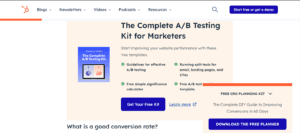
Just like HubSpot, they are experimenting with both placements to see which works best for their readers and visitors. At the same time, they are collecting valuable data in the form of contact details. Best practices for designing effective CTAs include using action-oriented language and contrasting colors.
Tip #4: Improve Website Navigation and User Experience
If you want your users to retain and complete a desired action, you must work on reducing your bounce rate and increasing your user experience. A study by the Nielsen Norman Group found that inconsistent navigation can lead to a 34% decrease in usability. That turns into an increased bounce rate.
According to Hotjar, the average bounce rate of a website falls somewhere between 26% and 70%. It varies from industry to industry. For example, in eCommerce and retail, the average bounce rate is 20% to 45%.
You see, there is a lot of potential we can unlock by optimizing our website for user retention. With better and smoother navigation and user experience, we can turn visitors into returning clients. A responsive design and easy-to-find information architecture are highly recommended when you first start improving your UX.
Tip 5 – Product page optimization
As an e-commerce website, your product page is the face of your website. When potential customers visit, they are most concerned about your products. If you have optimized your product pages for conversions, there are 20% more chances that people will buy from your website (or take the desired action).
By optimization, we mean:
- Making a page that is SEO-friendly and has the right keyword placement.
- Inserting persuasive product descriptions and features to make your page easy to understand and navigate.
- Adding images, demonstration videos (showcasing customers using the product to build a connection), and guides.
- Adding relevant keywords (that best suit your industry) in the meta title and description to optimize it for search engines. (For keyword research, there are multiple tools that are highly in demand, like Moz, Semrush, and SE Ranking’s keyword tool.)
- Adding frequently asked questions under your product that answer most of the customer queries. It helps in ranking your page (on Google) based on questions that people are searching for. Also, add questions directly related to your product, such as your return policy, exchange policy, and delivery charges.
- Being transparent about your pricing (inclusive of tax). If you are selling a product that is in high demand and everyone is selling it, find a way to be unique. Be honest about the price range and your product quality.
- Designing clear CTA buttons.
- Showing customer feedback (how many 5-star reviews you received). If your page doesn’t have reviews, encourage people to leave a review in return for a favor (such as a coupon or a special discount).
- Adding a “People Also Buy This” and “Related Products” section to trigger people’s interest and make them browse your pages.
- Adding a Wishlist button beside “BUY NOW” to encourage people to return to the list and eventually purchase when they are ready.
Conclusion
Marketers are getting smarter every day. They are looking for strategies that can double their client’s revenue each quarter without investing extra money in marketing efforts. That’s why our new favorite in e-commerce, SaaS, and other industries is Conversion Rate Optimization.
With these few conversion optimization tips, you can optimize your website for conversions and also get returning clients by building trust and credibility among users. If you want to improve your website performance and achieve higher conversion rates, then it’s the way to go.
Subscribe to our weekly newsletter to get crispy CRO tips and marketing strategies that win millions of qualified leads with minimal marketing spend.


